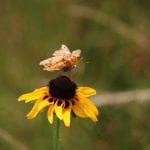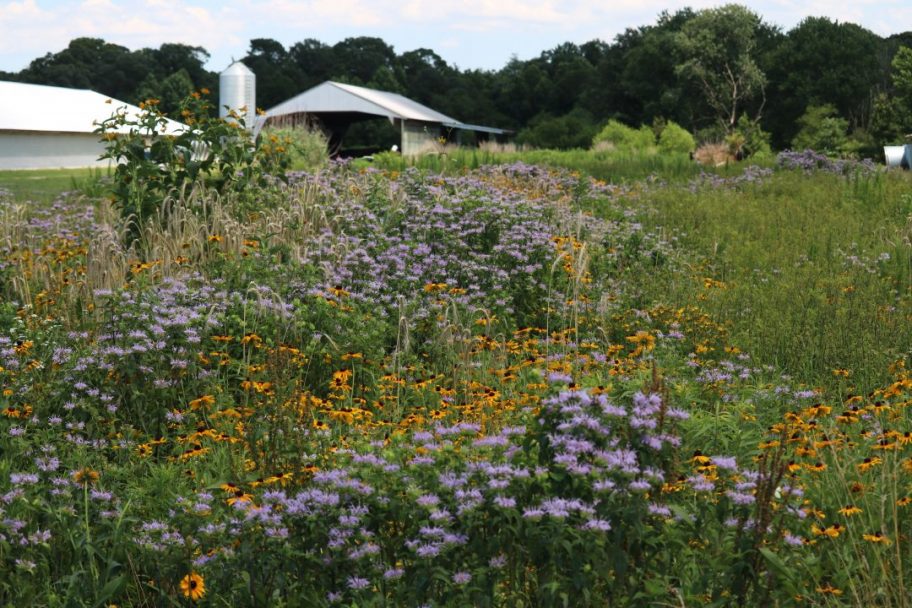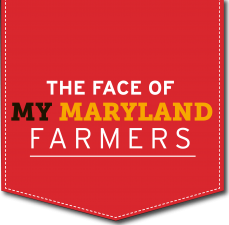 Farms dotted by red barns, green pastures and crops as far as the eye can see establish a bucolic setting on Maryland’s landscape. And, some farmers are purposely making their land even more beautiful — and meaningful — by including local plantings that will encourage the health of native pollinators.
Farms dotted by red barns, green pastures and crops as far as the eye can see establish a bucolic setting on Maryland’s landscape. And, some farmers are purposely making their land even more beautiful — and meaningful — by including local plantings that will encourage the health of native pollinators.
“We planted our first wildflower pollinator habitat almost eight years ago,” says Kimber Ward, who operates New Direction Farm, a broiler farm in Salisbury. “We planted our first one along the road to create a nice first impression with wildflowers that soften the metal building of the farm. And, of course, to attract pollinators.”
Since then, Kimber has incorporated a second pollinator habitat on his land. “These areas have created homes for all types of pollinators, especially butterflies, and have had the added benefit of attracting birds and rabbits,” says Kimber. Bees come to mind when thinking of a pollinator, and Kimber’s goal is to one day integrate more bees into his gardens.
But, native pollinators go beyond bees, including wasps, ants, butterflies, moths, bats, flies, beetles and hummingbirds. These pollinators move from flower to flower transferring pollen for fertilization of plants to produce seeds, berries, fruits and nuts.
According to the National Wildlife Federation, one third of the food we eat is a direct result of animal pollinators. Without their pollination work, we would see produce that was misshapen and underdeveloped, berries and seeds in much smaller sizes, and in some cases like apples, no fruit at all. The Natural Resource Conservation Service values the pollinators’ ecological service at $200 billion each year in America.
On farms, farmers use pollinator-friendly plantings for double duty — not only to help crops thrive, but also to act as windbreaks, riparian buffers and field borders. Riparian buffers contain plants and trees that border streams, rivers, bays and other waterways to help minimize erosion and provide food and a habitat for wildlife.
The great thing is that you can create a pollinator garden, like the ones on Kimber’s farm, in your own backyard. The University of Maryland Extension Master Gardener Program offers home owners these tips for success:
- Get your soil tested and choose plants that are naturally adapted to your garden’s soil conditions.
- Plan your garden where it can get at least six hours of sunlight a day.
- Plant a wide section of native plantings including flowering trees, shrub and plants, and include at least one species of native grass.
- Choose different flowers that bloom from early sprint to late fall to attract different pollinators.
- Mix annuals and perennials and include a variety of herbs.
- Avoid fertilizers, pesticides and herbicides.
- If pests become a problem, use Integrated Pest Management If you do apply pesticides, follow the label exactly. Use equal caution when applying pesticides approved for organic gardens, as these are not necessarily safe for pollinators.
- Use straw mulch, rocks and dried logs to provide nesting and hiding places.
- Provide water.
You’ll soon see why pollinators are not only valuable to your own garden, but to farmers’ land and crops across Maryland. Happy planting!
Hungry for more? Sign up for our newsletter and find us on Facebook, Twitter and Instagram.

